
Building a Simple Ball Lock Draft Line Flushing Setup
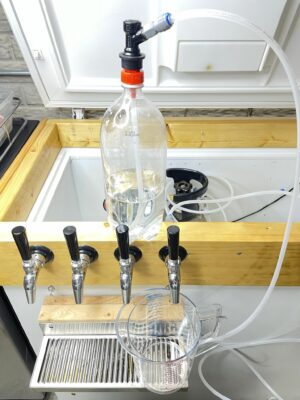
I use a recirculating draft line pump for cleaning my draft lines. That’s worked well for me (and many others) for years. See: Recirculating Draft Line Cleaning Pump
The issue I ran into was the desire to periodically do a quick flush to rinse, clean or sanitize lines.
When a keg kicks, there’s residual beer in the line. The beer at the end of a keg is also more likely to contain gunk – hop and yeast trub. Rather than leave that sitting in the line, shank and faucet, I like to flush is out. Also, when putting on a new beer I wanted to be able to easily sanitize.
Of course, I could get out my complete keg line cleaning pump, but setting that up and cleaning afterwards is a bit of work. What I wanted was an easy solution for a quick rinse or flush.
v1 of this build dates back to 2013. A little about that, for comedic and nostalgia reasons, at the end of this post. This write-up walks through a much improved v2.
This build is super easy, works great and can be made from a few items you probably already have around or can easily obtain.
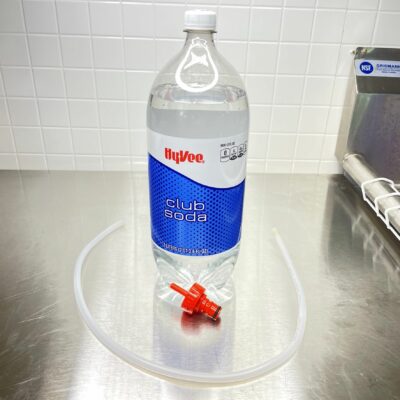 The components – a 2 Liter PET bottle, a carbonation cap and a short length of tubing. My build uses a Kegland DuoTight Compatible Cap and EVABarrier tubing. DuoTights and EVABarrier are outstanding [Hands on Review], but I want to stress that these exact components are not required. Any suitable carbonator cap and a length of compatible tubing should do the trick.
The components – a 2 Liter PET bottle, a carbonation cap and a short length of tubing. My build uses a Kegland DuoTight Compatible Cap and EVABarrier tubing. DuoTights and EVABarrier are outstanding [Hands on Review], but I want to stress that these exact components are not required. Any suitable carbonator cap and a length of compatible tubing should do the trick.
Carbonation Caps:
- Carbonation and Line Cleaning Ball Lock Cap – works with both gas & liquid QDs via MoreBeer
- Ferroday Stainless Carbonation Cap Counter Pressure Bottle Filling With 5/16″ Barb – Hands on Review
- Stainless Carbonation Cap with 5/16″ Barb Ball Lock Type, Fit Most Soft Drink PET Bottles
- UP100 Line Cleaning Cap Stainless Carbonation Cap Counter Pressure Bottle Filling,w/ 5/16″ Barb
- New offerings regularly pop up. Search Amazon for “stainless steel carbonation cap” to see what’s out there. Again, check descriptions to make sure these work for both gas/grey and liquid/black QDs.
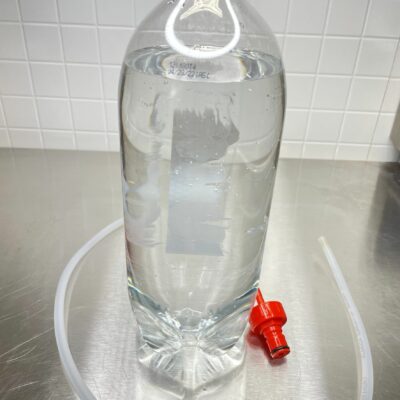 Step 1 – take off the label. Or… leave it on. 🙂 Whatever you want.
Step 1 – take off the label. Or… leave it on. 🙂 Whatever you want.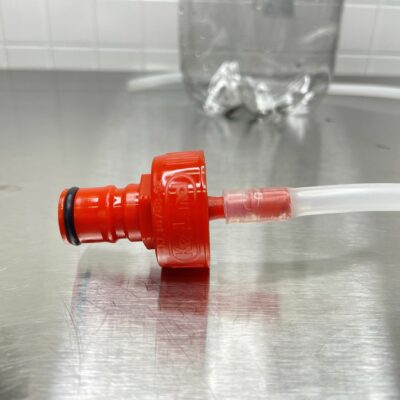 Step 2 – attach tubing to carbonator cap. I like the idea of using EVABarrier because it’s stiff and I thought it would work well.
Step 2 – attach tubing to carbonator cap. I like the idea of using EVABarrier because it’s stiff and I thought it would work well.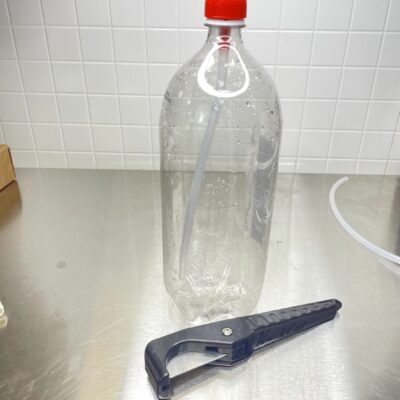 Step 3 – Trim the tubing to fit. That’s it… you’re ready to change the world by quickly and easily flushing ball lock lines!
Step 3 – Trim the tubing to fit. That’s it… you’re ready to change the world by quickly and easily flushing ball lock lines!
Flushing Lines
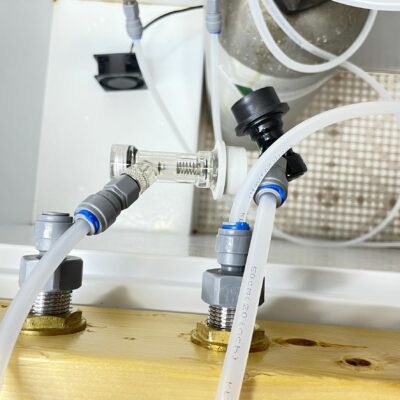 This photo shows pretty much all the players. The left side is the gas line that I use for charging the cleaner assembly. The right line is liquid line with ball lock QD. You can also see the other side of the liquid line terminating in the right-most shank. My setup is all DuoTight/EVABarrier and you’ll see DuoTight Compatible Locking Clips used throughout. If you are a DuoTight user, the locking clips are something I recommend as they provide a more secure connection.
This photo shows pretty much all the players. The left side is the gas line that I use for charging the cleaner assembly. The right line is liquid line with ball lock QD. You can also see the other side of the liquid line terminating in the right-most shank. My setup is all DuoTight/EVABarrier and you’ll see DuoTight Compatible Locking Clips used throughout. If you are a DuoTight user, the locking clips are something I recommend as they provide a more secure connection.
 This is powered by CO2 pressure. It’s important to underfill the bottle to leave some head space for CO2 pressure. I found that about half full, or 1 liter works well. I used about 30 PSI of pressure. Make sure to choose a pressure that’s compatible with all components in your setup.
This is powered by CO2 pressure. It’s important to underfill the bottle to leave some head space for CO2 pressure. I found that about half full, or 1 liter works well. I used about 30 PSI of pressure. Make sure to choose a pressure that’s compatible with all components in your setup.
In Action!
This works really well. 1 liter (half full) along with a 30 PSI initial charge would be enough to briefly flush all four of my tap lines. Alternatively, less than 1 liter could be used to minimize chemical use. A “quick clean” could also be accomplished by filling lines with PBW and letting them sit, followed by a round of water and finally Star San.
The pitcher I’m using for collection is a 2 Quart Rubbermaid Commercial Pitcher. This is a smaller version of the one gallon pitcher I’ve used and recommended for years. Although I got this half gallon size for the kitchen, it’s worked it’s way to my brewing area and is the perfect size for this task.
But Will it Flush Two Lines??
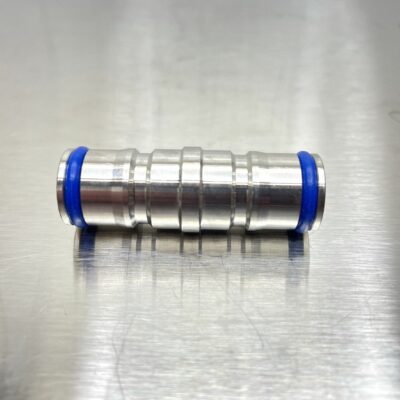 Here’s the key piece of hardware to clean two ball lock lines at the same time. It’s a ball lock jumper from Valuebrew. There are only a couple similar offerings out there, to my knowledge. This one is unique because it uses their custom color, food grade post o-rings AND… it works with both liquid and ball lock jumpers.
Here’s the key piece of hardware to clean two ball lock lines at the same time. It’s a ball lock jumper from Valuebrew. There are only a couple similar offerings out there, to my knowledge. This one is unique because it uses their custom color, food grade post o-rings AND… it works with both liquid and ball lock jumpers.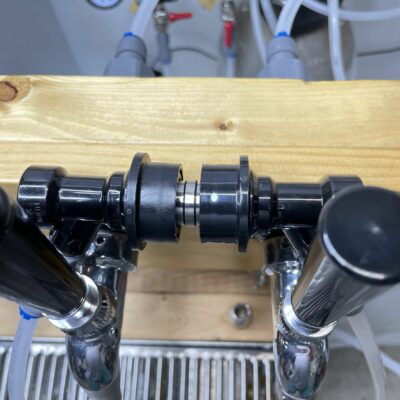 Here it is installed. This is connecting two 10′ EVABarrier tubing runs.
Here it is installed. This is connecting two 10′ EVABarrier tubing runs.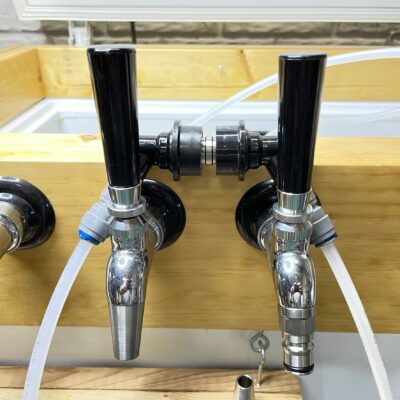 If you look on the right you’ll see my Intertap faucet is equipped with a ball lock nozzle. This would work the exact same way with a NukaTap faucet. If you have another brand, you’d just make a jumper that fits over the spout of your faucet.
If you look on the right you’ll see my Intertap faucet is equipped with a ball lock nozzle. This would work the exact same way with a NukaTap faucet. If you have another brand, you’d just make a jumper that fits over the spout of your faucet.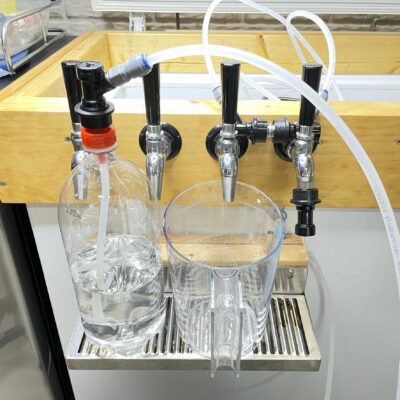 Complete Setup for Two Line Test
Complete Setup for Two Line Test
The plumbing for my test is as follows
- Flushing Assembly – 2 L bottle/carbonation cap/dip tube (on left) >
- Ball Lock Line Jumper – 2 ball lock QDs with a short length of EVABarrier tubing >
- Intertap ball lock spout on right faucet >
- 10′ EVABarrier tubing with ball lock QD >
- Ball Lock Jumper Fitting >
- 10′ EVABarrier tubing with ball lock QD >
- Intertap faucet (second from right) >
- 2 Quart collection pitcher
In Action – 2 Lines!
I was actually quite surprised at how well this worked. It’s over 20′ of tubing, four QDs and a jumper. All being driven by the head pressure in half of a 2L bottle.
Super Size It
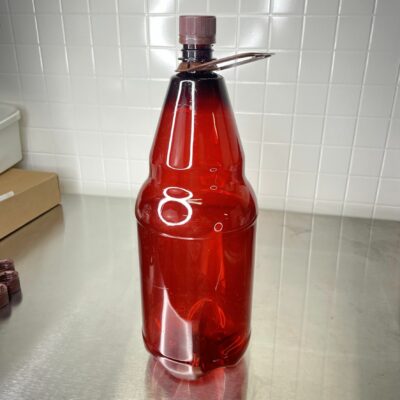 Kegland makes a 2.5 Liter PET Growler Bottle Growler that gives you some additional capacity.
Kegland makes a 2.5 Liter PET Growler Bottle Growler that gives you some additional capacity.
Alternative for Pin Lock Systems
The setup outlined here is for ball lock systems. I know of no similar Pin Lock carbonator caps or fittings. You could build as outlined and make a small jumper to go from Lock to Pin Lock
Related: What’s the Difference Between Ball Lock Kegs and Pin Lock Kegs?
Draft Line Cleaning Solutions and Sanitizers
- National Chemical Keg Beer Line Cleaner for Kegerators 32 oz Bottle
- Search Amazon for “BLC Line Cleaner”
- Tank and Line Cleaner (30) – 30 pre-measured packs
- 32oz. BLC Liquid Line Cleaner – via Keg Connection
- LLC – Liquid Line Cleaner via MoreBeer
- TLC Tank & Line Cleaner – 1 lb. CL38 – via MoreBeer
- Search Amazon for “Star San”
- Search Amazon for “PBW”
All Our Builds & Related Resources
- Hands on Review: Kegland Ball Lock Cleaning Kit
- Build A Recirculating Draft Line Cleaning Pump
- Mark II Keg & Carboy Cleaner… As a Recirculating Draft Line Cleaning Pump
- Building a Simple Draft Line Flushing Setup
- Recirculating Draft Line Cleaning Build v1
- Kegerator Tips & Gear | Keg Repair Part #s | Recent Keg Finds
Related Reviews:
- Hands on Review: Kegland Ball Lock Cleaning Kit &… Party Pump
- Hands on Review: Kegland 2.5 Liter Growlers
Keg Deals!
kegdealsRebuild Your Kegs!
For Fun, Here’s More about V1…
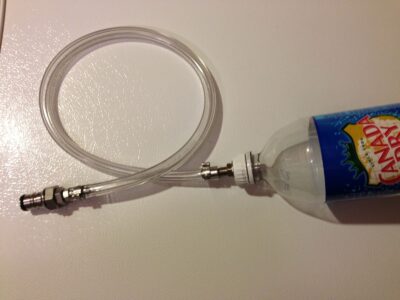 This setup also uses a PET bottle to store solution, but gets more complicated and… harder to use from there.
This setup also uses a PET bottle to store solution, but gets more complicated and… harder to use from there.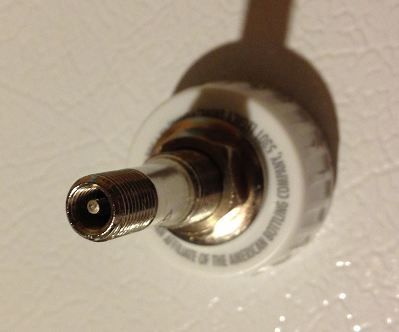 The cap was modified by installing a Shrader valve
The cap was modified by installing a Shrader valve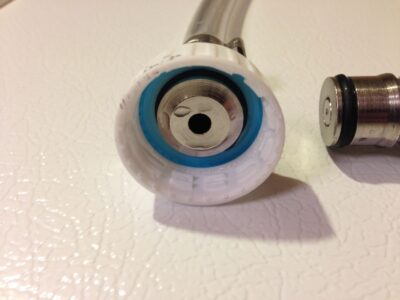 Inside of the converted cap
Inside of the converted cap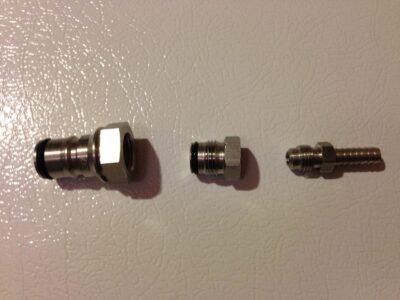 From there, I put together a bunch of relatively expensive parts to form the ball lock connector
From there, I put together a bunch of relatively expensive parts to form the ball lock connector
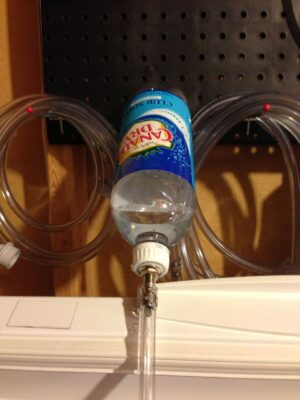 To make it harder to use… there’s no dip tube. The bottle had to be oriented so the top faces down.
To make it harder to use… there’s no dip tube. The bottle had to be oriented so the top faces down.
More Homebrew Finds!
- Last 50 Finds!
- Top Deals – a curated list of the best deals
- Homebrew Reviews – one of the largest libraries of homebrew reviews in existence!
- Our Top Posts – tips, how-tos, resources posts and more
- Let’s be Friends!
Recent Deals!
10 Most Recent Homebrew Resource Posts & How-To’s!
We are Homebrew Review HQ! Our 10 Most Recent Reviews
Also: Kegerator Tips & Gear | Keg Repair Part #s | Recent Keg Finds
Our Top Draft Resources!
Check our our Top Draft Related Resources- Commentary: Pin Lock Keg Pricing and Availability
- Check Your CO2 Regulator for Leaks!
- How to get a keg ready for first use? New Keg Cleaning and Prep
- Portable Draft Beer Serving Options!
- Pin Lock Keg Pricing and Availability
- The Most Difficult Spot to Check for CO2 Leaks
- Keg O-Ring Materials Selection! – EPDM, Silicone and Buna-N?
- Why Do I Have Bubbles in My Beer Line? Diagnosing and Fixing Kegerator Foam Problems
- Five Benefits of Using Corny Kegs As Fermenters
- Rebuilding & Reconditioning Homebrew Kegs!
- Food Safe Replacement Keg O-Rings in Bulk
- Hands on Review: Kegland DuoTight Fittings & EVABarrier Tubing!
- Why Won’t My Beer Carbonate? Fixing Draft Beer Carbonation Problems
- What Does a Flow Control Faucet Do?
- Upgrade Your Kegerator – 6 Improvements!
- Serve Homebrew on Any Kegerator & Convert Commercial Kegerator to Homebrew
- Tips and Gear for Growler Filling
- What’s the Difference Between Ball Lock Kegs and Pin Lock Kegs?
- Checking for Draft System CO2 Leaks – Using The Pressure Gauge Method
- Tip: Consider Oetiker Stepless Clamps for Kegerator Gas and Beer Lines
- Hands On Review: Inkbird ITC-308 Dual Stage Temperature Controller +WiFi Version
- Universal Poppets Tips and Tricks!
- Convert Your Mark II Keg & Carboy Washer to a Recirculating Draft Line Cleaning Pump!
- Step by Step: Finding and Fixing Keg CO2 Leaks
- Kegerator Temperature Probe Placement – To Immerse or Not To Immerse? – three tests to determine optimal pla…
- Kegerator Beer Line Temperatures & Reducing Foam with a Recirculating Fan
- Kegging CO2 Use Estimations and Calculations
- Balancing Your Kegerator Draft System
- Building a Simple Ball Lock Draft Line Flushing Setup
- Build a Recirculating Draft Line Cleaning Pump
- Home Brew Keg Roundup – New & Used, 5 and 2.5 Gallon & More!
- Damp Kegerator? Fix Kegerator Condensation
- Homebrew Temp Controller Roundup! – Kegerator and Fermentation – concepts, applications and models
- Bulk Keg Orings and Keg Parts Reference
This post may contain affiliate links. We may make a commission when you use our links. This will never cost you extra. Thank you for supporting Homebrew Finds!
greatdealsMake sure the components you use are compatible and rated for your intended application. Contact manufacturer with questions about suitability or a specific application. Always read and follow manufacturer directions. tag:lnksfxd toppost:lineflush tag:tpr
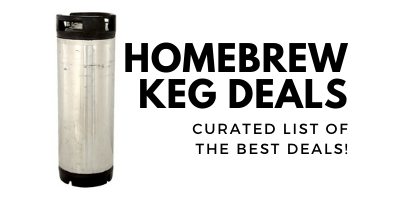
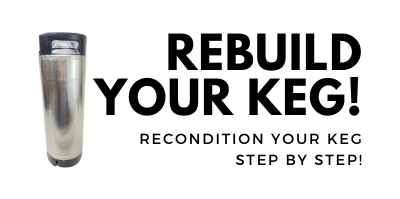



For my deep clean, I made an adapter that I can use my air compressor to fill a corny keg with pressure, and put the cleaning solution in there. Makes my “cleaning” kit a post adapter, 3 inches of tubing and the QD.
Chris – do you know that you don’t sit there and pump it? The sprayer pressurizes. You pump it for 10 seconds which builds up a bunch of pressure in the bottle, and then just pull the trigger (which has a lock-on position) and it flows continuously. You’d never be pumping and flowing at the same time.
I agree with the hand pump sprayer, it ends up being about the same cost (or cheaper) and you get the pressurization system built right in. My kegerator actually does not have the tap sitting directly on the top of the box, so it has to push up about an extra foot, and the garden pump has no problems getting the liquid up to that height.
It’s not the CO2 use, it’s just that there’s a better solution out there that is actually cheaper. Check out this link:
It’s not only cheaper and more durable, but it’s even easier to use since you can just pump it up, even if there’s no CO2 nearby.
That build is awesome. It is mainly for deep cleaning your draft lines. I built a recirculating pump for this purpose. I don’t want to have to sit there and operate a hand pump for 30 minutes for each of my faucets. Because of that I built a recirculating setup. The tool that this post covers is a quick line flushing assembly. I wanted that because my main line cleaning tool takes a bit of work to get out and put away. There are no doubt cheaper solutions out there for everything, but that isn’t what this particular post is about. I like the simplicity of this and it’s size. It’s a 1 liter bottle and some tubing. The hand pump is sweet and is certainly a great choice if you don’t mind running the pump by hand.
Your recirc pump is much better for “deep cleaning”. The link is for a quick rinse mostly – I keep one with Starsan in it all the time so I can quickly sanitize if I’m swapping kegs. Just connect the liquid line and pull the trigger, easy as could be.
Some points of clarification: 1. I’m not suggesting this as a device to use to complete a thorough cleaning of your draft lines. It’s for quick purging and sanitizing. 2. I’m using a 1 Liter bottle. CO2 use isn’t a major factor here. 3. If you are that concerned about CO2 use, I’ve made a suggested modification that would use no CO2 at all.
I use a tetra whisper 40 air pump with a tube and a gas-in connector. That way I can pop it on to a keg full of PBW/water and pump it out into the second keg in line. Then I do the same with water. Gives it plenty of time in contact with the lines then flushes them without using CO2.
Do you know if the corny plug adapter would work with a Pin lock liquid post? I’d love to build something for cleaning my lines, but I use all pin lock kegs….
I built the same one from the hand-pump garden sprayer and it works awesome, and I don’t have to mess with my CO2. I’ll fill it with PBW and warm water to clean the lines every time I change a keg. A quick batch of sanitizer through and it’s ready to go.